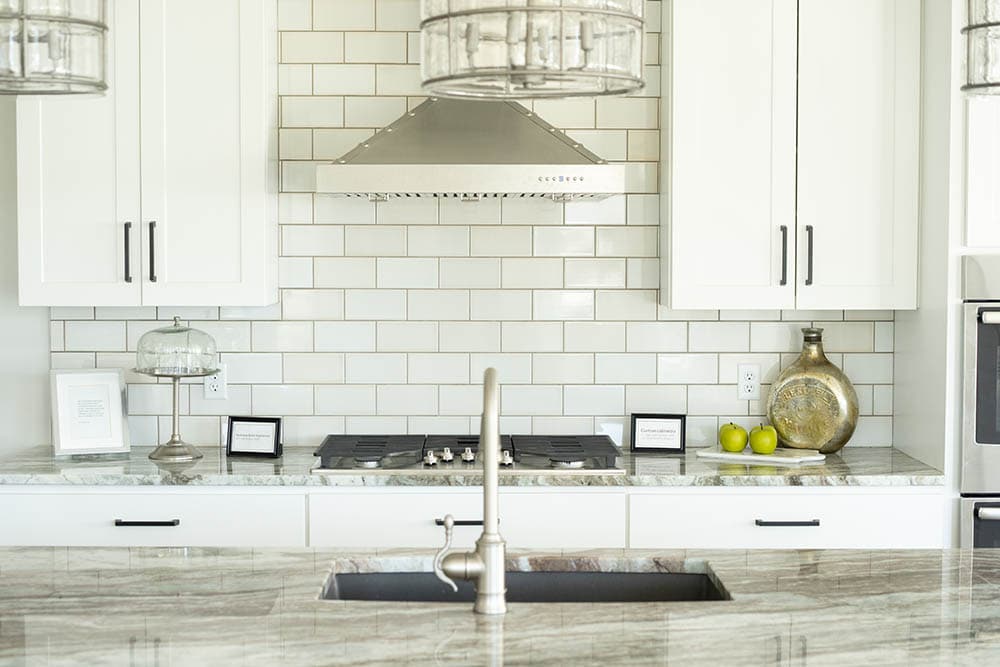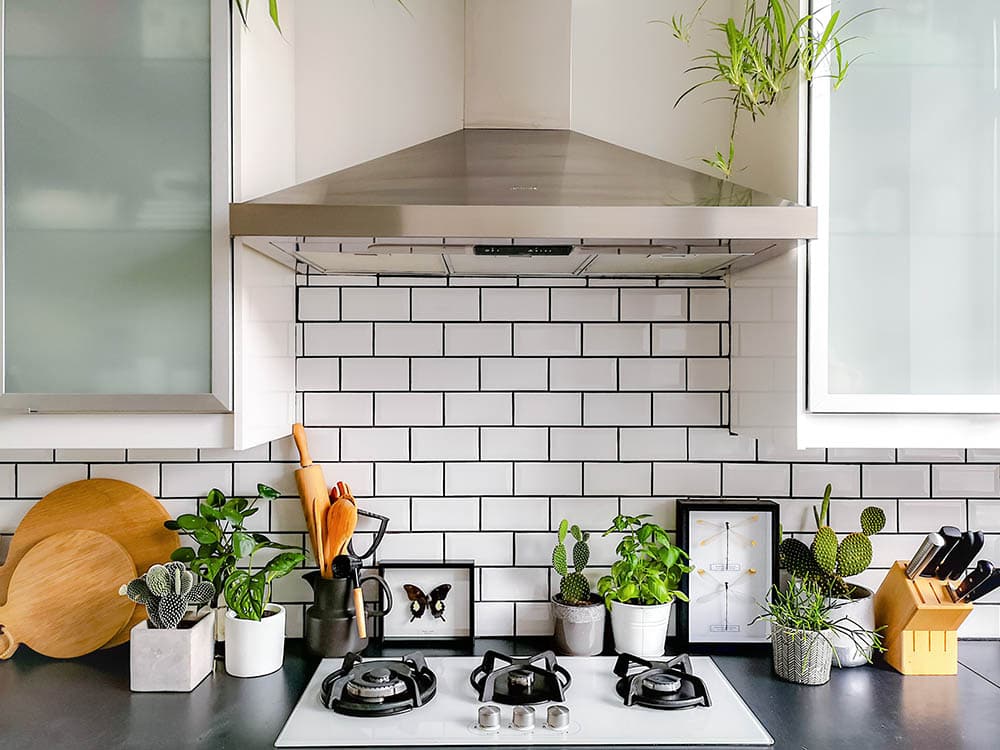What Is Subway Tile? Benefits, Designs & Uses
-
Pete Ortiz
- Last updated:

Subway tiles are white, rectangular tiles with a gloss finish. They are named for the subway stations in New York City where they were first used and for where they were invented. In home décor, the term “subway tile” has taken on a broader meaning with tiles of different dimensions, intended orientation, and even colors, but a true subway tile should have a glazed, glossy finish that is easy to clean and that reflects light.
Subway tiles are commonly used in kitchens and bathrooms but can also be used in any other room. However, because they are thin, they aren’t suitable for use on floors. Read on for more information about subway tiles and to determine whether they’re right for use in your home.
Origins
Subway tiles were invented in 1904 by Christopher La Farge and George C. Heins. The designers had been given the remit of coming up with a suitable wall covering that was easy to maintain but that would appeal to subway users. The tiles they came up with are still used today not only in subway stations but in a host of other venues and homes.

Traditional Subway Tiles
La Farge and Heins’s tiles were designed with curved edges and with a glazed, glossy finish. The finish meant that the tiles did not stain but could be easily wiped clean. Their white glaze meant that they wouldn’t fade and would retain their original brilliance. The glossy color also helped brighten otherwise dark underground stations. The traditional tile measured around 3 inches tall by 6 inches wide.
Modern Designs
The tiles not only proved popular in subways. Their neutral color and design combined with their sanitary properties quickly saw them used in diners as well as in home kitchens and bathrooms. And despite having been introduced more than 100 years ago, subway tiles remain very popular today, albeit in a wider range of designs and styles.
Although the tiles tend to be rectangular, dimensions can vary from those that are almost square to longer tiles. Colors include traditional white but can also come in black, red, yellow, and every hue in between. Colors can also be combined to create an almost mosaic look. While tiles were traditionally laid horizontally, modern interpretations see the tiles laid vertically and in different patterns and layouts.
Subway Tile Benefits
There are multiple benefits to the purchase and use of subway tiles, including:
- Stain Resistant – The glazing of the tiles’ surface means that liquids and solids run straight off, and it prevents them from getting into the pores of the ceramic underneath. This stain resistance makes subway tiles a great choice for kitchens, especially around the back of the cooker as a splashback alternative and at the back of kitchen units. Resistance to stains is also one of the reasons why this type of tile is popular in bathrooms.
- Easy to Clean – Another benefit of glossy glazing is that if food or some other substance does stick to the tile, it’s easy to wipe off. Again, this makes the tiles popular in areas where food might get splashed but it also makes it easier to wipe away grease and other remnants.
- Design Availability – The first subway tiles were likely made from glass, although you are more likely to find ceramic tiles now. With that said, there are glass variants, as well as those made from stone and even marble. Although they might not strictly be subway tiles, they have the same style, and the use of different materials means that you can get the look that will benefit your room. As well as different materials, subway tiles also come in different colors
- Layout Capabilities – For a traditional underground look, the tiles should be laid horizontally so that the tiles are longer than they are tall. However, you don’t live in the Manhattan subway, which means that you don’t have to utilize this same layout.
Lay them vertically, which can help make a low-ceilinged room appear taller. Create a mosaic-style effect using different colors or different shades of one color. Or create interest and intrigue by using traditional white tiles but laying them in a pattern of your choice. Also, think about the grout that separates the tiles. White grout can leave a room looking very utilitarian and stark, while black grout can accentuate the white.
- Related Read: How to Clean Grout Between Tiles: 7 Tips & Tricks

Designing With Subway Tiles
With so many options and varieties of tiles, you can use subway tiles in virtually any room, regardless of the room’s purpose or its existing décor.
- Tile Size – 3” x 6” tiles remain the most popular, and the 1:2 ratio makes it easy to create designs and layouts. However, there are alternatives, such as a 4” x 12” tile that naturally has fewer grout lines and gives a more modern finish. Bear in mind that the more grout there is, the more difficult the tiles will be to lay and clean.
- Finish – Smooth tiles are more traditional. They also offer stain resistance and are easier to clean. A matte finish looks less stark and more informal, or you could choose something with an aged or antique finish.
- Style – While plain tiles, or those with beveled or curved edges, are the most common, you will find an array of different styles to quench your desire for something a bit different. Glass tiles are really shiny and do a good job of encouraging light, while framed tiles can further accentuate the lines that are created with grouting.
- Color – Color is important in all elements of room design. White tiles are uniform and utilitarian, making them suitable in the kitchen and even the bathroom, but too much white can also seem stark and too formal. Black tiles, although naturally very dark, can have a highly glossed finish that actually does a good job of reflecting natural and overhead lights. Alternatively, go all out and have purple, red, or yellow tiles.
- Layout – The traditional layout of subway tiles is an offset horizontal pattern, similar to how bricks are laid on a wall. Another alternative is the stack, whereby there is no offset between the tiles, but this needs very accurate grouting and laying to avoid disheveled lines. You could lay the tiles diagonally or create a unique pattern.
- Grout – Grout does more than hold tiles in place. It also plays a massive part in how the tiled wall will look. The grout can consist of thin lines, which look neat when laid properly, or it can be thick and do a good job of hiding tile or tiling irregularities. The grout can match the color of the tiles and become barely noticeable, or contrast with the color of the tiles and stand out. It can be neutrally colored so that your attention is taken by the tiles themselves.
In Conclusion
There is a lot to consider when buying and designing using subway tiles, especially as today’s range is considerably more expansive than the traditional 3” x 6” white, glossy tiles that were first introduced at the turn of the 20th Century. Choose from a gamut of colors and a variety of sizes and create a layout that matches the style in your room for the best results.
- https://www.ddthometransformations.com/single-post/pros-cons-of-5-kitchen-backsplash-options-trending-in-2020
- https://www.remodelista.com/posts/what-is-subway-tile-facts-tips/
- https://whytile.com/2021/01/everything-you-need-to-know-about-subway-tile/
- https://mtcopeland.com/blog/everything-you-need-to-know-about-subway-tile/
- https://www.westsidetile.com/resources/an-ultimate-guide-to-subway-tile-design-ideas-and-tips/
Featured Image Credit: carolyn christine, Unsplash
Contents



